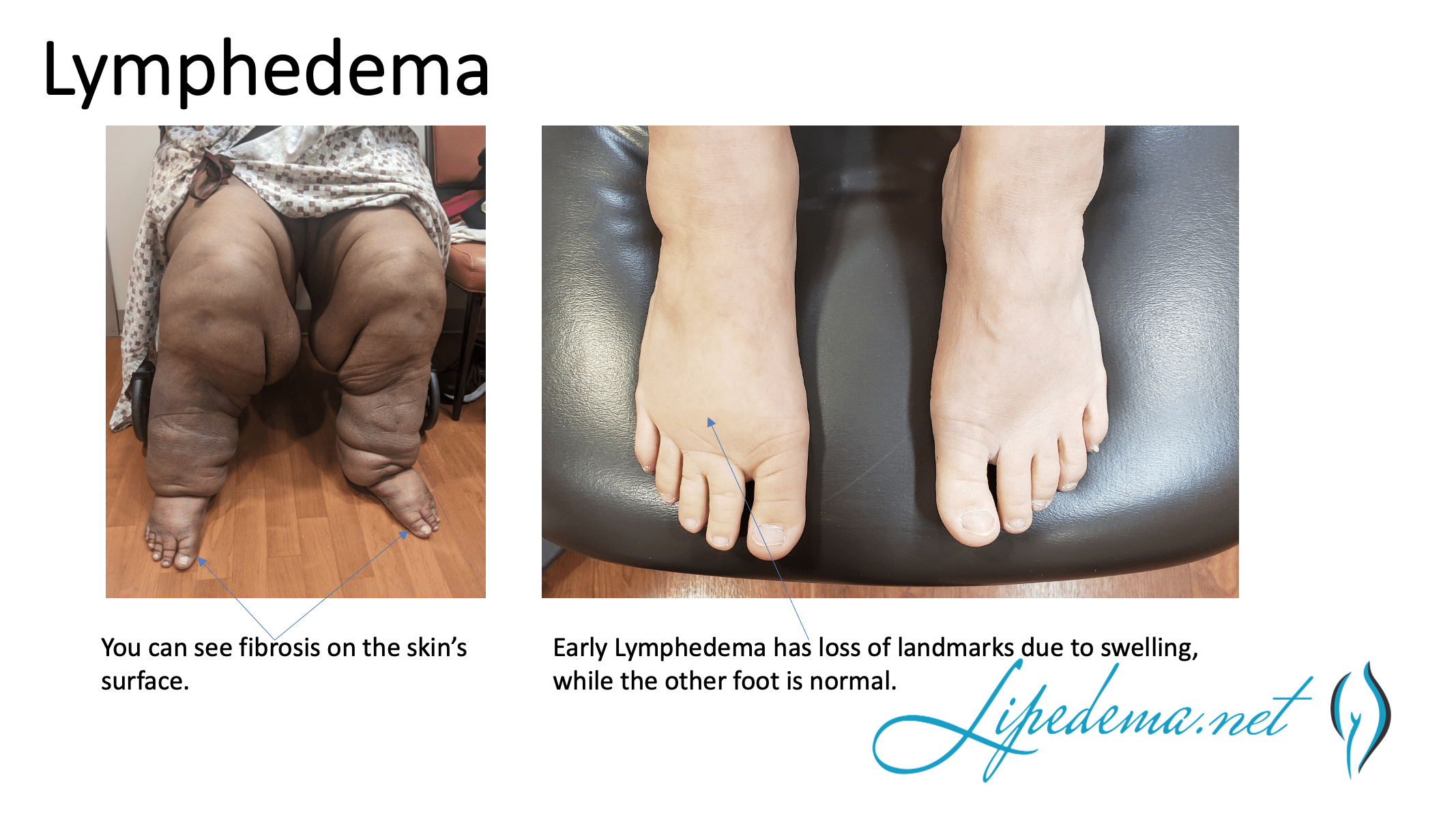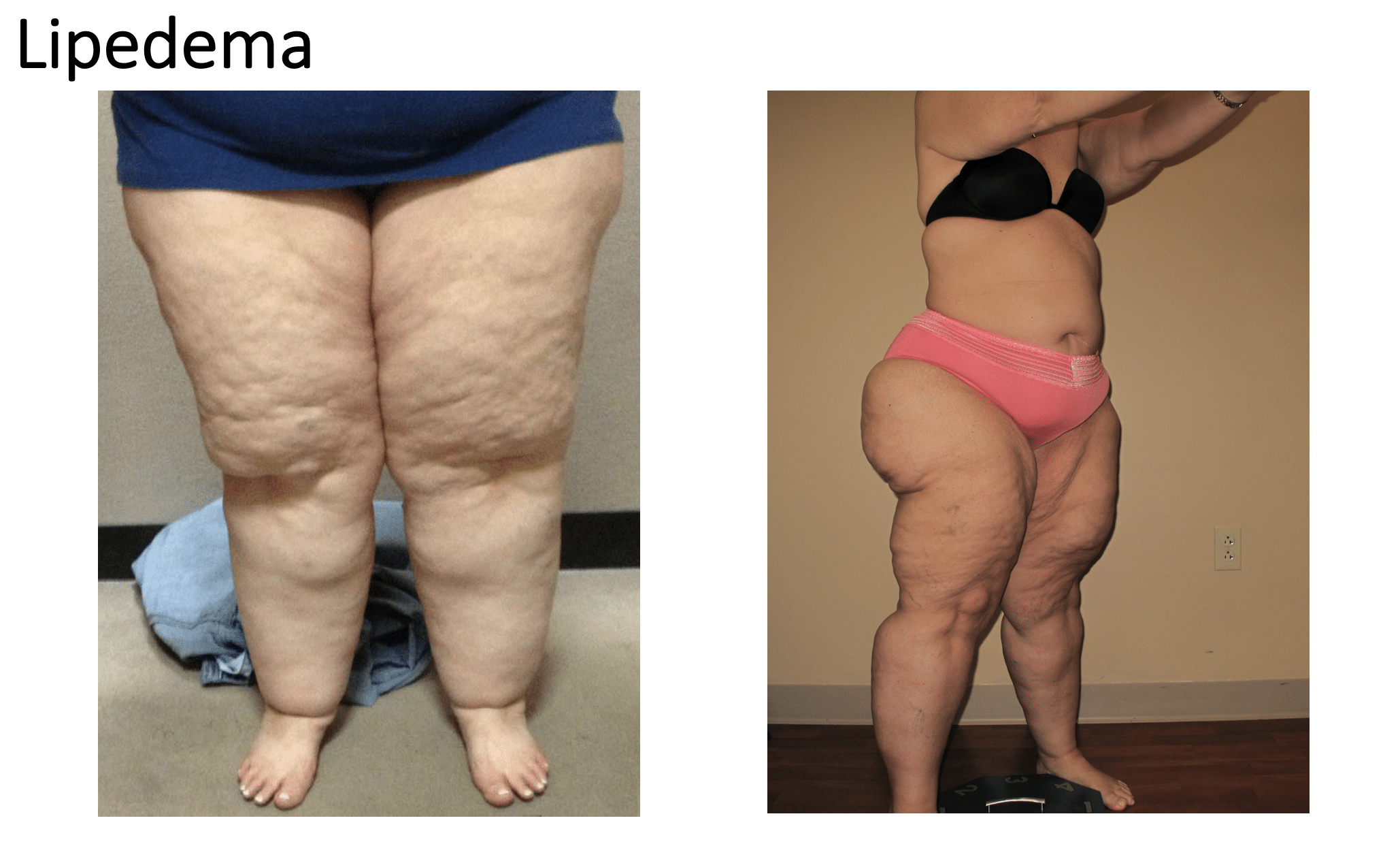When it comes to lymphedema and lipedema, the swelling you see is just the tip of the iceberg. If you’ve been told your heavy legs or swollen limbs are simply a matter of “fluid retention” or “being overweight,” you’re not alone. For decades, both lipedema and lymphedema have been oversimplified, misdiagnosed, or altogether dismissed by healthcare providers.
But a recent article published in Phlebology (April 2024) underscores what patients and specialists like Dr. Thomas Wright at Lipedema Surgical Solutions have long known: these diseases are not just cosmetic or mechanical problems—they are complex, chronic conditions with widespread impacts on physical and emotional health.
Let’s break down the key takeaways from the latest research, explain how lipedema and lymphedema are different (and how they overlap), and share what surgical options can help restore mobility, relieve pain, and improve quality of life.
Understanding Lipedema and Lymphedema
Lymphedema is a chronic condition that results from damage to or dysfunction of the lymphatic system, leading to fluid buildup, swelling, and hardening of tissues—typically in the arms or legs. It can be:
- Primary, meaning congenital or hereditary;
- Or secondary, often caused by cancer treatment, surgery, infection, or trauma.

Lipedema, on the other hand, is a painful fat disorder that almost exclusively affects women. It causes symmetric fat accumulation, primarily in the hips, thighs, and lower legs, and is often resistant to diet and exercise. Importantly, lipedema fat is not typical body fat and is often accompanied by:
- Tenderness
- Easy bruising
- Feelings of heaviness
- And, in later stages, secondary lymphedema (a condition called lipo-lymphedema).
While both conditions involve visible swelling, their causes, progression, and treatments are different, and lumping them together can delay proper diagnosis and care.

“More Than a Swollen Limb”: What the Latest Research Tells Us
A 2024 article published in Phlebology, titled “Lymphedema and Lipedema: More Than a Swollen Limb?” makes the case that we must stop oversimplifying these diseases as just “swelling disorders.”
Here are some of the paper’s most important insights:
- Both lymphedema and lipedema are systemic diseases that affect lymphatic, vascular, and adipose (fat) tissues.
- Patients with lipedema are at higher risk of developing secondary lymphedema if the condition is left untreated.
- These conditions impair mobility, impact quality of life, and carry a heavy psychological burden, including depression, anxiety, and body image issues.
- The standard clinical guidelines are still catching up, and many providers lack the training to differentiate between the two.
The takeaway: If you’re struggling with swollen, heavy legs and getting no clear answers, you may be dealing with something far more complex—and you deserve specialized evaluation and treatment.
Key Differences Between Lymphedema and Lipedema
| Characteristic | Lymphedema | Lipedema |
| Cause | Lymphatic damage or congenital issue | Hormonal, genetic fat disorder |
| Gender | Affects men and women | Almost exclusively women |
| Onset | After surgery, cancer, infection, or spontaneously | Often during puberty, pregnancy, or menopause |
| Location | One limb or one side of body | Bilateral, symmetrical legs (arms in later stages) |
| Skin changes | Skin may harden, develop fibrosis | Skin usually remains soft; bruises easily |
| Pain | Aching or discomfort | Tender, painful to touch |
| Response to diet/exercise | May respond to weight loss | Resistant to weight loss methods |
| Treatment | CDT, compression, surgery | Conservative therapies, lipedema reduction surgery |
Understanding these differences is crucial for developing the right treatment plan and preventing unnecessary pain and disability.
The Overlap: When Lipedema Leads to Lymphedema
In later stages of lipedema, the enlarged fat tissue and inflammation can compromise the lymphatic system, leading to a secondary lymphedema which is a type of lipo-lymphedema—a painful combination of both conditions.
When this occurs, patients often report:
- Sudden increases in swelling, especially in the ankles and feet
- Thickened, hardened skin
- Recurrent infections like cellulitis
- And increased difficulty moving or walking
If you’re experiencing these symptoms, it’s not just a worsening of lipedema—it may be the onset of secondary lymphedema, and you need an expert who understands both.
Why Accurate Diagnosis Matters
Too often, patients with lipedema are told to:
- Just lose weight
- Wear compression stockings
- Or accept their body as it is
While well-meaning, this advice misses the medical reality of the disease. Lipedema fat does not respond to calorie restriction the way normal fat does, and undiagnosed lipedema often leads to physical and emotional exhaustion.
Early and accurate diagnosis allows patients to:
- Start conservative therapy like compression, manual lymphatic drainage, and exercise tailored to their condition
- Access lipedema reduction surgery, which can dramatically reduce pain and restore mobility
- Prevent the onset of secondary lymphedema
How Lipedema Reduction Surgery Can Help
At Lipedema Surgical Solutions, Dr. Thomas Wright offers advanced surgical interventions that remove diseased lipedema fat while protecting lymphatic structures. These procedures aren’t cosmetic—they’re reconstructive.
Benefits of surgery include:
- Reduced limb size and swelling
- Improved mobility and endurance
- Decreased pain and sensitivity
- Lower risk of developing secondary lymphedema
- Improved quality of life and emotional well-being
Most patients report life-changing improvements within weeks of their procedure. Unlike cosmetic liposuction, lipedema surgery is performed using specialized protocols to minimize lymphatic injury.
Compassionate Care from a Leading Expert
Dr. Wright is one of the few U.S. physicians trained and experienced in diagnosing and surgically treating lipedema. At our St. Louis-area clinic, we provide:
- Comprehensive diagnostic evaluations
- Non-surgical treatment options
- Staged, lymphatic-sparing surgical procedures
- Ongoing follow-up and lifestyle support
Whether you’re newly diagnosed or have been struggling for years without answers, we’re here to listen—and help.
Final Thoughts: You Deserve More Than Dismissal
Lymphedema and lipedema are more than swollen limbs. They are serious, chronic diseases that affect your entire life—from how you move, to how you feel, to how you see yourself.
The swelling may be the most visible symptom, but beneath it lies years of misunderstanding, pain, and missed diagnoses. You are not alone, and there are answers—and hope—available.
If you suspect you have lipedema or are already living with lymphedema, reach out to our team at Lipedema Surgical Solutions. We’re here to guide you toward real, lasting relief—because no one should have to suffer in silence.
Schedule a consultation today to learn more about how lipedema reduction surgery and expert care can change your life.

